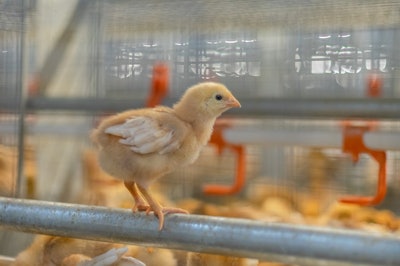
Identifying people as “key owners” for specific biosecurity tasks would help egg producers improve their biosecurity programs and prevent highly pathogenic avian influenza (HPAI) from infecting their flocks.
In a new resource created by agricultural cooperative United Egg Producers’ (UEP) HPAI task force team, the organization says that each portion of an egg producer’s staff should be assigned specific tasks to help prevent a biosecurity breach on egg farms.
This article specifically covers the roles that an egg producer’s highest level of management, location/shift supervisors, general management (GM) and compliance officer should play, according to UEP’s HPAI task force team.
Highest Level of Management on Farm
The highest level of the management team should develop a culture of biosecurity by:
- Appointing an empowered biosecurity compliance officer on each site.
- Providing documented training and holding open discussions with staff.
Location/Shift Supervisors
Supervisors should establish shift meetings to ensure the implementation and following of the biosecurity rules. Some farms may need several meetings to occur simultaneously depending on the various areas of the farm such as processing and production.
General Management
GM should instruct drivers to stay in their trucks, establish truck requirements for the sanitation team and document truck history the last seven days to prevent contamination.
Additionally, they should have different people dedicated to managing staff who work inside and outside of the barns.
GM should monitor HPAI infection exposure during periods of the process that are at risk, such as moving pullets and layers, house maintenance, movement of equipment, mowing or moving manure.
Concerning traffic flow, GM should:
- Designate parking in an area away from the poultry houses and outside of the Primary Business of Activity (PBA).
- Create traffic flow patterns to control where personnel enter the PBA and farm.
- Direct trucks that are picking up manure to not use the same driveway that employees use. A separate entrance for manure trucks and an isolated manure area may need to be constructed.
- Ensure physical signage is always visible.
- Conduct audits to ensure entry procedures for crossing the line of separation (LOS) are being followed for all personnel entering the premises.
Compliance Officer
Compliance officers should be responsible for:
- Limiting what can come onto the farm, implementing disinfection and/or sterilization for tools and miscellaneous items and determining where items can go if entering the clean side of the LOS (cell phones should not be allowed in the barn area).
- Implementing and educating on the management of miscellaneous items that employees may bring to the farm that could increase transmission.
- Keeping support crews separate from barn staff and implementing permitted-only entry into the LOS.
- Establishing a permanent process that verifies biosecurity requirements are completed before, during and after tasks such as moving birds, moving manure, maintenance etc.
- Implementing periodic self-audits on the facility’s biosecurity program during and after implementation to ensure the National Poultry Improvement Plan’s (NPIP) 14 biosecurity principles are satisfied (consider having your biosecurity program audited during the annual animal welfare audit).
Learn more about the roles an egg producer’s supporting team should play in biosecurity.
















